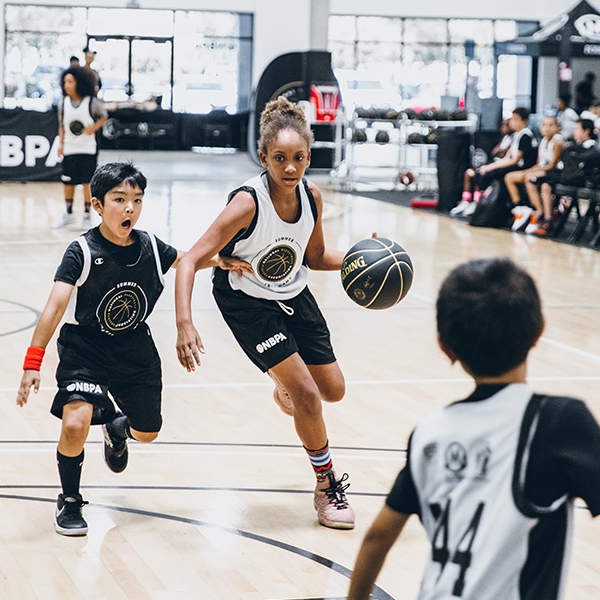As youth sports and youth basketball start to ramp back up, injuries can be a common occurrence. In 2017, youth basketball was the most popular team sport in the US among youth ages 12-17 with over 11 million participants. As well, around 14.4 million youth age 6-14 play basketball. With basketball being such a popular sport, it is no wonder it accounts for many injuries. Youth basketball injuries are also on a rise, which may be in part due overuse and increased time on the court. In this article, we are going to address some of the most common injuries, what to do for them, and how to prevent them.
1. Ankle Sprains
Ankle sprains are the most common injury in basketball. Ankle sprains in basketball can occur by landing awkwardly, landed or stepping on opponent’s foot, twisting the foot with a sudden stop, or slipping on a wet spot on the floor. The most common ankle sprains are lateral ankle sprains and occur when the foot rolls inward (inversion). With inversion injuries, one or more of the three lateral ligaments: ATFL (anterior talofibular), CFL (calcaneofibular), or PTFL (posterior talofibular) are stretched or torn.
These injuries can take anywhere from a few days to six weeks to heal. When the foot turns outward, an eversion injury occurs injuring the deltoid ligament on the medial side of the ankle. If the foot is pointed and the toe catches the floor, a dorsiflexion injury results in a high ankle sprain. These sprains typically take longer to heal, anywhere from 2-10 weeks.
Since fractures and more serious ligament injuries can occur by the same mechanisms, it is important to know when to seek care. If the injured athlete, is unable to walk or put weight on the ankle directly after the injury an X-ray is probably warranted. Other reasons to seek care include: severe swelling or bruising, bony tenderness, continuing to limp after a few days, or an inability to return to sports within an appropriate time.
Treatment for ankle sprains involves relative rest, ice, elevation, compression to decrease swelling, and anti-inflammatories or acetaminophen for pain. Taping or bracing (ASO, Active ankle Brace) may help protect the injured ligament to allow for walking. Taping and bracing may also help to prevent ankle sprains.
2. ACL/Knee Injuries
The anterior cruciate ligament (ACL) is one of main stabilizers of the knee. While ACL injuries can occur by contact to the outside of the knee, most ACL injuries in basketball are non-contact. They occur when an athlete lands or plants, and the knee caves inward (valgus injury). There is usually immediate pain, and the knee gives way. Athletes often will feel a pop, and swelling occurs minutes to hours after the injury. If the ACL is torn in an athlete, surgery is almost always required. In youth athletes, any swelling or effusion on the knee joint should be evaluated by a sports medicine physician.
ACL tears are very common, and lead to a lot of time away from sport. After ACL surgery, it maybe 6-18 months before an athlete can return to full sports activity. There are many programs that are being developed to help train athletes to prevent ACL injuries. These programs focus on increasing quad, hamstring, hip, and core strength while also trying to improve balance and stability. They also include jump training to help the athlete learn to land with the feet directly under the knees and hips instead of the knee caving inward. Here is an example of one such program: https://www.hss.edu/acl-injury-prevention.asp
3. Muscle Strains/Contusions
Muscle strains (pulled muscle) are common injuries in basketball. Hamstring, calf, adductors (groin), and quad are the most common. Strains are graded I-III with III being the most severe. Typically rest, ice, stretching, and rehab are the mainstays of treatment.
Most strains take about 2-6 weeks to heal, but more severe strain can take 12 weeks. Grade III strains involve tearing the tendon that attaches the muscle to the bone, and sometimes require surgery. In younger athletes, these tendons often attach to the bone at a growth plate, and these athletes can pull the bone away (avulsion fracture). If the injured athlete has a visible defect, severe pain, or difficulty weight-bearing, they should get evaluated.
Muscle contusions (deep muscle bruises) occur commonly in the thigh during basketball. The treatment is ice, elevation, and anti-inflammatories. It is important early in the injury to keep the muscle stretched out to prevent shortening and calcium deposition in the muscle.
4. Concussions
A concussion is a mild traumatic brain injury that occurs from direct contact to the head from contact with an opponent or the court, or from indirect injury such as a whiplash type event. Symptoms of a concussion can included headache, blurry vision, dizziness, nausea, feeling in a fog, trouble concentrating, loss of memory, or being more emotional.
An athlete suspected of having a concussion should immediately be removed from play and should not return unless cleared by appropriate medical personnel. An athlete with a concussion should never return to play while still having symptoms and should never return to play the same day. Once the athlete is symptom-free, they should be evaluated and cleared by a physician familiar with treating concussions before starting a graduated return to play that typically takes 5-7 days.
For more information on how to treat and recover from injuries, visit the Hospital for Special Surgery, the #1 Hospital for Orthopedics and Official Hospital of the NBPA

